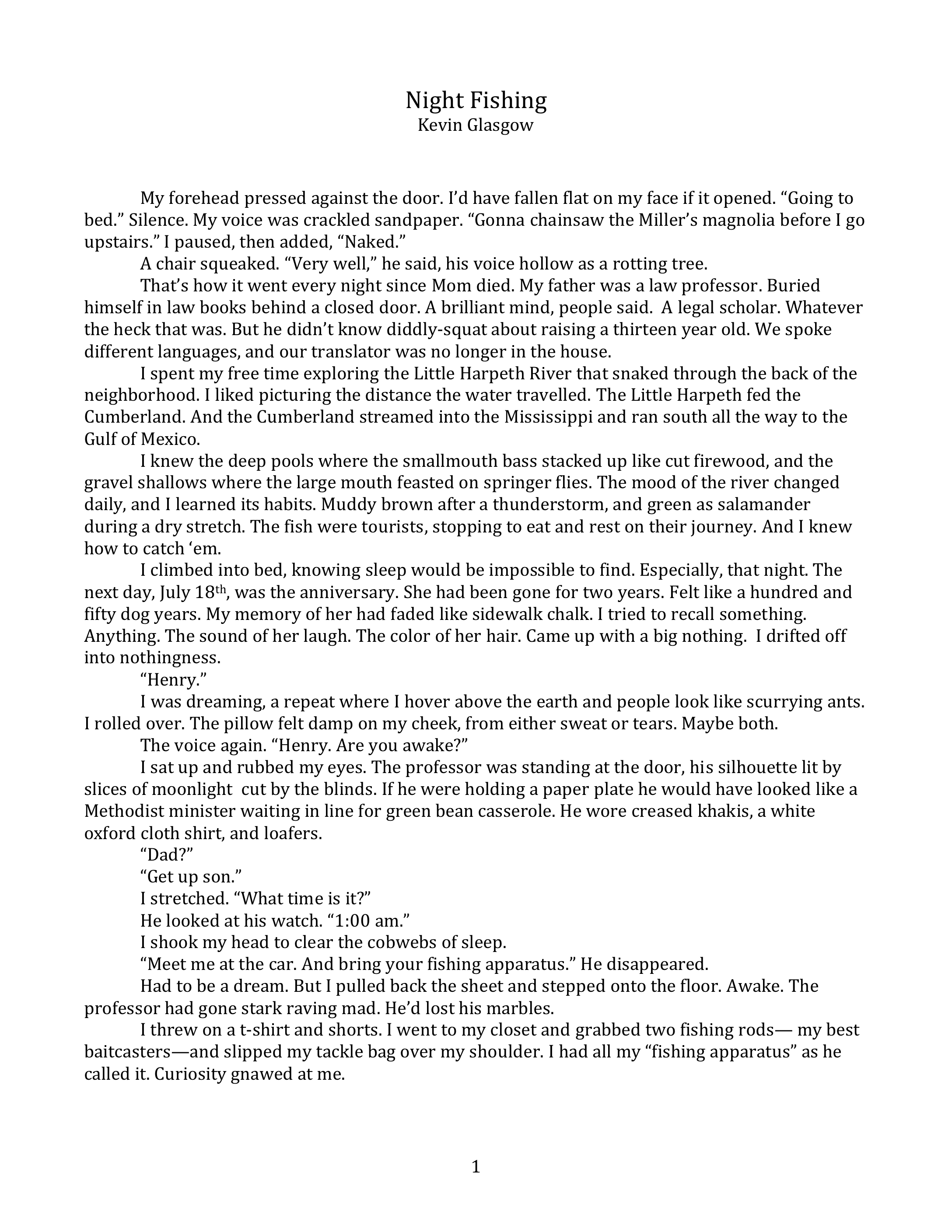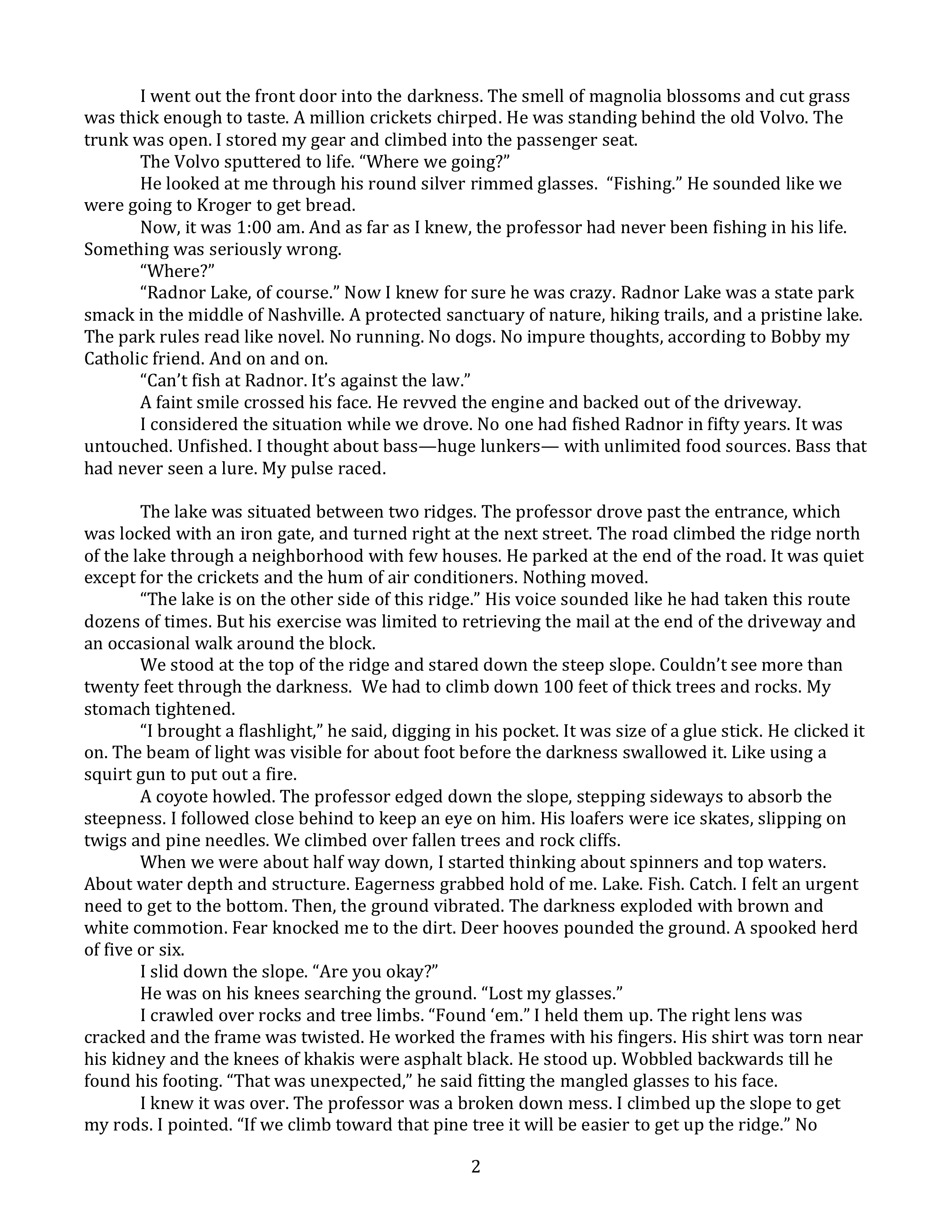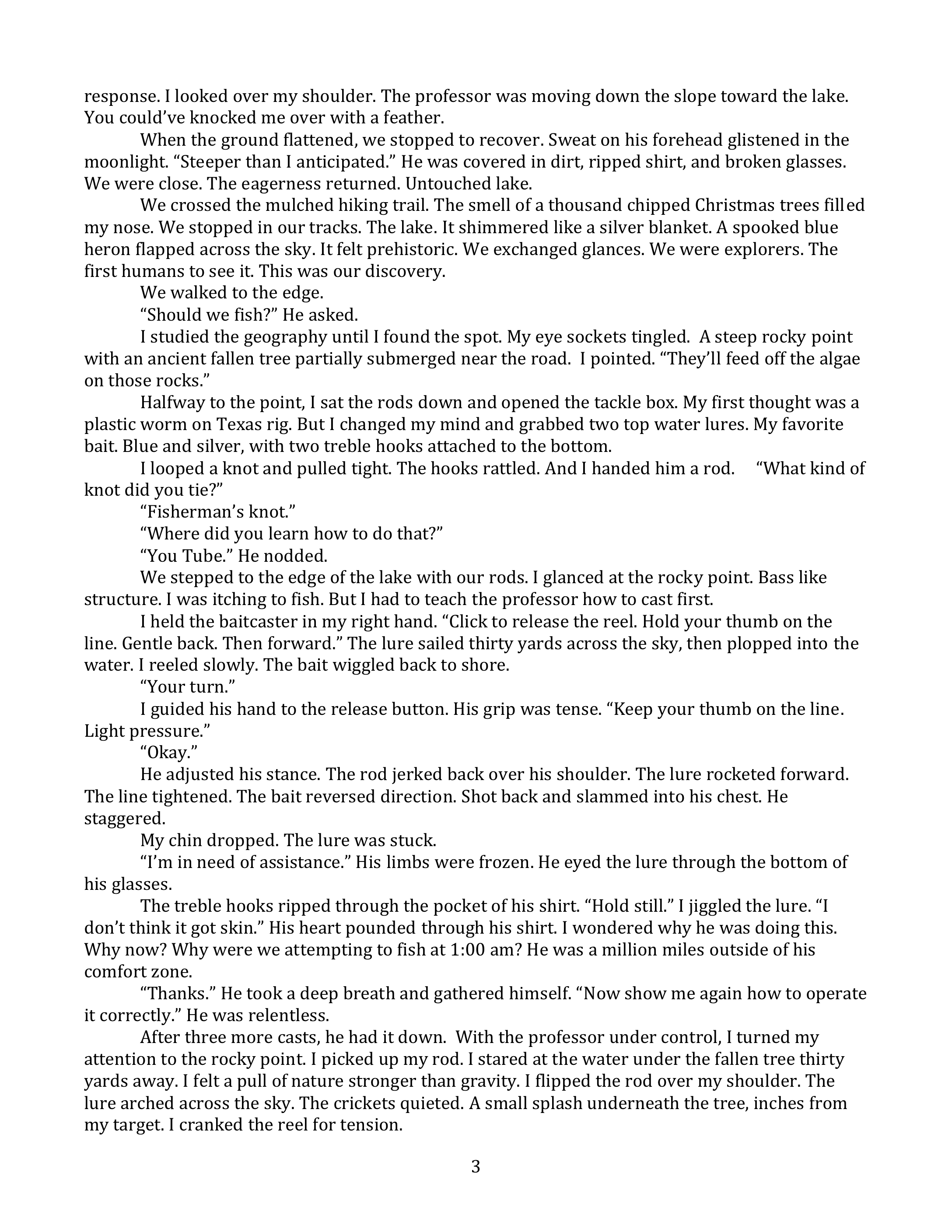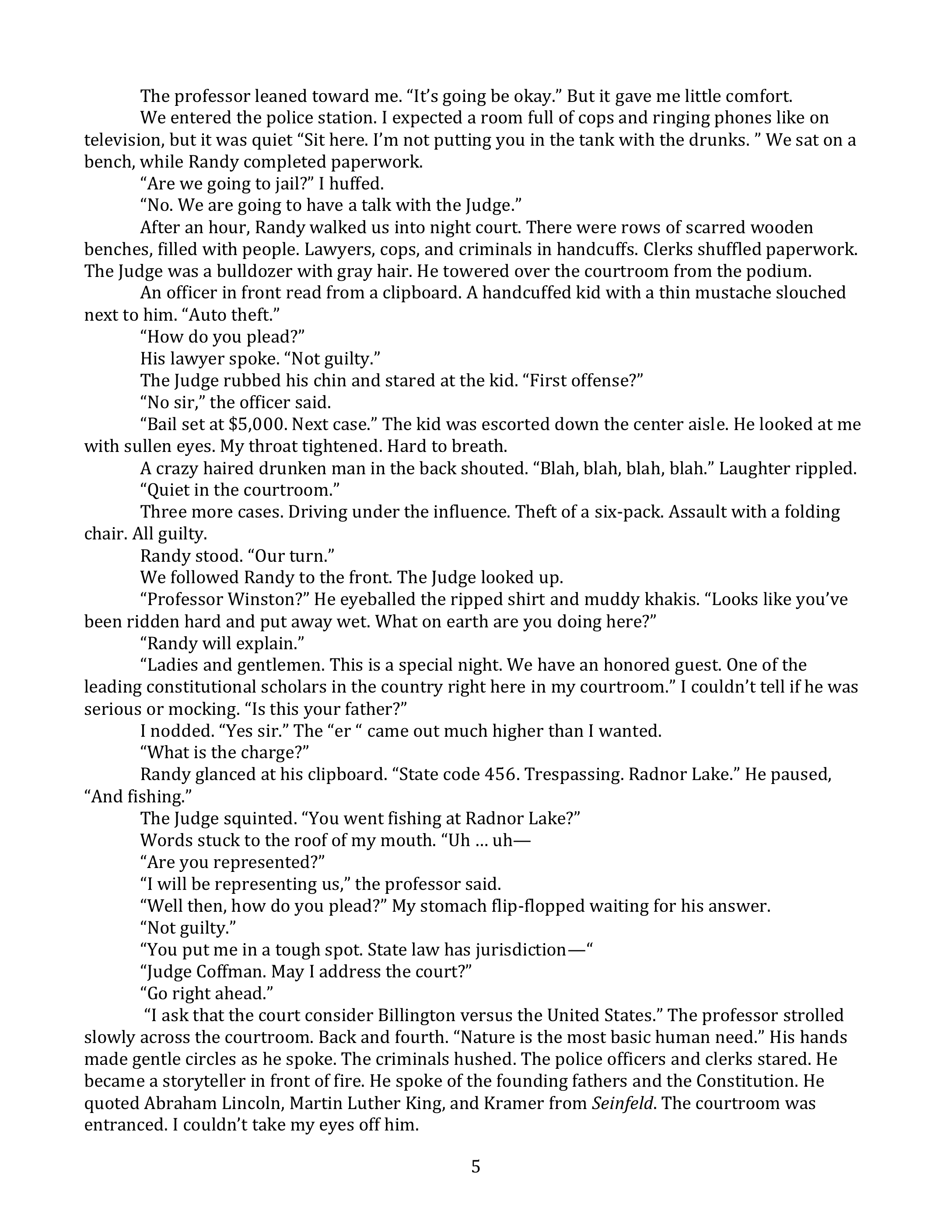This week, I'm joined by Story Grid editor Lori Puma to critique “Night Fishing,” a coming of age short story by Kevin Glasgow. We discuss how to take your story from pretty good to WOW!
Have you ever wondered how to take a story that works and make it even better? In this episode, you'll discover specific tools to improve a story that’s already working by enhancing the elements of your genre and style to focus on your ideal reader’s specific expectations. You’ll also hear about ways to connect the protagonist’s external and internal journeys by showing what the former means to them.
Listen to the Writership Podcast
Editorial Mission—Take Your Story from Pretty Good to WOW
Take a scene (or a sequence of scenes) from a masterwork, a story that is closest to the one you want to write. Identify the life value shift from the beginning to the end of the story. In other words, how does the protagonist or their life circumstances change from beginning to end? Ask yourself, how does the author establish the value in the beginning (where the protagonist starts), in the middle, and at the end (where the protagonist ends)? What circumstances, events, and decisions show the reader the protagonist’s change?
Then look at a scene or sequence from your own work in progress. Identify the value shift from beginning to end. Have you established the beginning life value? Have you showed a change through the middle? Has the protagonist’s situation materially changed by the end? Is it clear? How could you make it more clear or stronger? How is the change related to your global or primary genre? What circumstances, events, and decisions do you use to show the protagonist’s change?
Think about your ideal reader and what elements they expect to find in a story of your type. What is the style of your story, for example, are you relying on drama or comedy? What patterns can you use to create an expectation that you pay off in a surprising way? How can you connect what’s happening in the character’s external world to their internal world by demonstrating what the former means to them?
Wise Words on Meeting Reader Expectations
“I’ve learned that people will forget what you said, people will forget what you did, but people will never forget how you made them feel.”
Advice for our author
Dear Kevin,
Thank you for sharing your delightful and touching story! There are lots of great elements working for you here. You’ve executed a Worldview-Maturation story in a limited space with scenes that work and contribute to the story as a whole. It was easy to become attached to both Henry and his father. The setting is well developed, and you’ve included lots of concrete, specific details that bring the story alive.
When analyzing a story, one of the first things we think about is the genre and the specific type of change the protagonist experiences with it. The specific change is related basic human needs that correspond to Maslow’s Hierarchy.
You said your intention was to write a “coming of age” story, which we would call Worldview-Maturation. In stories like these, the protagonist changes from some level of naivete to some level of sophistication or worldliness. In other words, they develop a more nuanced view of some aspect of the world. You demonstrate the change in Henry really well.
As Lori mentioned, you could take the same characters and circumstances and tell a story in a different genre, for example, an action story (life value: life and death) or crime (life value: justice and injustice). We evaluate the big picture of the story by checking the change that occurs from beginning to end then look at the individual scenes to make sure they affect movement on the life value spectrum, in this case, from naivete to sophistication. In other words, each scene takes the protagonist closer to or further from sophistication.
You can find a detailed discussion of the specific reader expectations for a Worldview-Maturation story here. (That is the third part of a series of posts on internal genres. Part 1 discusses how to distinguish between the internal genres, and part 2 discusses how to execute the life value shift across the entire story.)
In terms of making Henry’s change even stronger, we think seeing and hearing the father’s speech in the court room would, rather than hearing about the sources he cites, would support the more nuanced way that Henry sees his father. Lori mentioned that the courtroom scene reminded her of “The Devil and Daniel Webster” by Stephen Vincent Benét.
We’d also love to see a little more detail about Henry’s and his father’s relationship to fishing. Has Henry already been interested, or was it something he’d picked up after his mom died? Has his father ever gone fishing before? This would show what fishing means to each one. You’ve done a great job of this with Henry, but this would be even stronger if we knew when his passion for fishing was ignited.
You make great use of comedy in the story, which we would classify as the style or presentation for the story (other examples include drama and epistolary). Lori talked about how you can create anchors for the emotional journey with a pattern of three incidents where one presents a contrast (for example normal, normal, off-the-wall or off-the-wall, off-the-wall, normal).
Another way you could improve upon a story that’s already working is to consider the audience. Lori mentioned three different audiences this story might appeal to: tween and teen readers, fishing enthusiasts, or readers of literary magazines. For each audience you would emphasize different aspects. For example for tween or teen readers you might focus on the adventure aspect of being out and exploring the world and difficulty of relating to parents; for a fishing enthusiast, you could focus on the action, humor, and technical aspects; for a literary reader, you could focus on the inner journey and the feelings evoked, as well as the language.
All of that said, the main takeaway is that you’ve written a fun story that works and evokes reader emotions. Well done!
Thank you for trusting us with your story!
All the best,
Leslie
Our Submission






About My Guest Editor
Lori Puma is a Story Grid Certified editor who helps writers with partially-finished or ‘meh’ manuscripts turn those stories into novels readers can’t put down. All while helping them build the storytelling skills they need for a career writing fiction. She started her writing career publishing scientific papers that double as sleeping aids. Since then, she’s worked as a marketer and data storyteller and had her work published in places such as the Washington Post, Los Angeles Times, and the Story Grid website. Click here to find out more about Lori.
The Writership Index
Listeners have asked for an index of the podcast episodes and the topics discussed, so we've put together a Google spreadsheet containing details of each episode, its airdate, author name, story title, genre, story type, published location, author website, and topics discussed. Get access to the spreadsheet here.
Join the Writership Book Club!
We rely on the generous support of our Patreon crew to cover the cost of hosting and our time in preparing for the show. New supporter rewards coming in July!
In June, we're reading The Virgin's Promise: Writing Stories Feminine Creative, Spiritual and Sexual Awakening by Kim Hudson. We'll discuss and compare the Virgin's Promise and Hero's Journey archetypes. For more information, visit our Patreon page.
Image courtesy of getstencil.com and Lionello DelPiccolo on Unsplash
.


